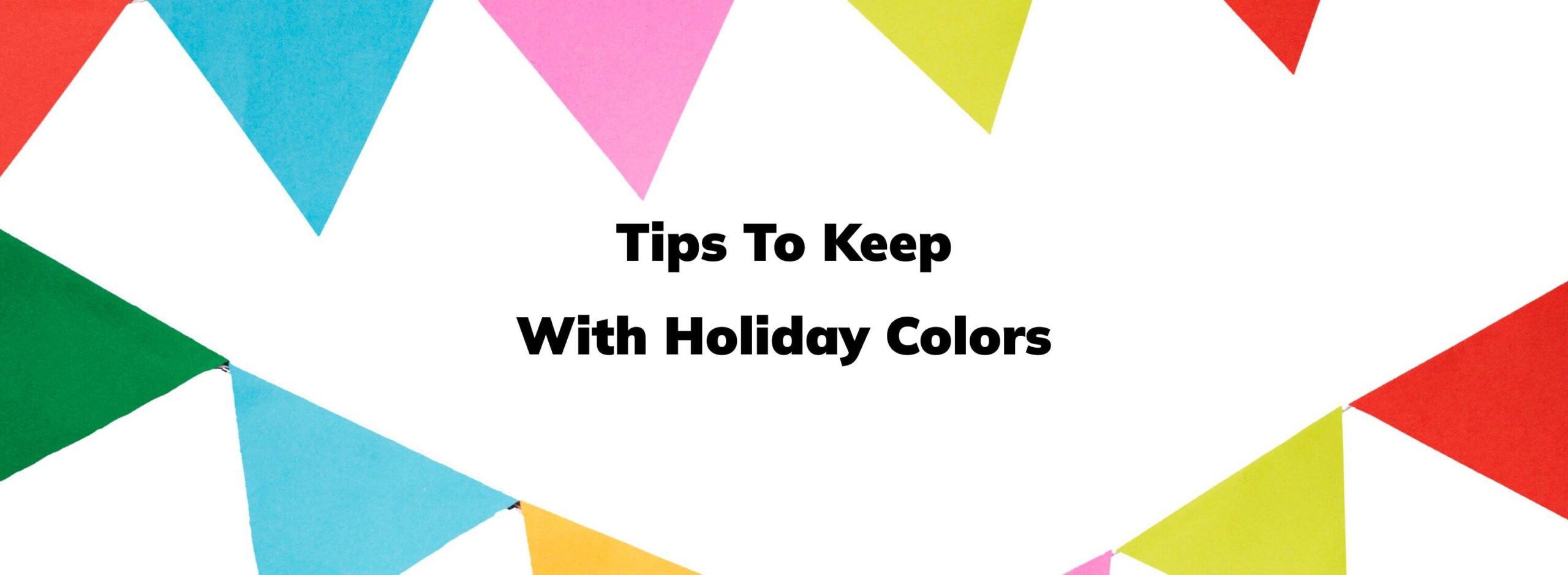The holiday season is one of the most exciting times of the year for families and friends and businesses. It is a great opportunity for brands to get creative with their marketing efforts and engage with their audience more personally. One way to do this is by incorporating holiday colors into your web design and marketing campaigns. Using holiday colors in web design and marketing has become an increasingly important aspect of brand messaging and audience engagement.
With the holiday season fast approaching, businesses want to create a festive and inviting atmosphere on their websites and in their marketing campaigns. Incorporating holiday colors can be a powerful way to achieve this goal, but it requires a thoughtful approach to balance creativity with brand identity and accessibility.
This article will explore the psychology behind holiday colors, best practices for incorporating them into your web design and marketing, and examples of brands that have successfully used holiday colors to engage their audience. Whether you’re looking to add festive flair to your website or create a holiday-themed marketing campaign, this article will provide the tips and insights you need to effectively use holiday colors in your brand messaging.
What Are Holiday Colors?
Holiday colors are the colors that are typically associated with specific holidays. These colors can vary depending on the holiday, but they are often chosen to reflect the season, the symbolism of the holiday, or the cultural traditions associated with it. Some of the most common holiday colors include:
- Red and green for Christmas
- Gold and silver for New Year’s Eve
- Orange and black for Halloween
- Pink and red for Valentine’s Day
- Pastel colors for Easter
- Patriotic colors (red, white, and blue) for Independence Day (Fourth of July)
- Dark purple and orange for Halloween
- Green for St. Patrick’s Day
- Red and gold for Chinese New Year
Understanding The Psychology Behind Holiday Colors
Understanding the psychology behind holiday colors is essential to effectively incorporating them into your web design and marketing. The use of color can have a powerful impact on human emotions and behavior, making it an important tool for businesses looking to engage their audience.
Holiday colors are often associated with specific emotions and moods. For example, red and green are commonly associated with Christmas and can evoke feelings of warmth, joy, and tradition. Blue and white are often associated with Hanukkah and can create a sense of calm, peace, and spirituality.
When choosing a holiday color scheme for your brand, it’s important to keep in mind that less is often more. While incorporating holiday colors can be effective, overusing them can be overwhelming and detract from your brand’s messaging. It’s also important to consider accessibility when using holiday colors, ensuring that your website and marketing campaigns remain accessible to all.
Tips for Incorporating Holiday Colors in Web Design
Incorporating holiday colors into your web design can create a festive and inviting atmosphere for your audience. However, using them effectively and thoughtfully is essential to maintain your brand’s identity and aesthetics. Here are some tips for incorporating holiday colors into your web design:
A. Use holiday colors in website banners and hero images
Banners and hero images are often the first things visitors see when they land on your website. Incorporating holiday colors into these elements can create a welcoming and festive atmosphere. For example, you can use a red and green color scheme in a banner to promote a holiday sale or use blue and white in a hero image to highlight a holiday-themed product.
B. Add holiday accents to website typography and icons
Adding holiday accents to your website typography and icons can be a subtle yet effective way to incorporate holiday colors. For example, you can add a snowflake icon to a button or use a candy cane font for your website’s headlines.
C. Use holiday colors in website buttons and calls-to-action
Using holiday colors in your website’s buttons and calls to action can draw attention to important actions and create a sense of urgency. For example, using a red button for a holiday sale can encourage visitors to click and explore the promotion further.
D. Avoid overusing holiday colors to maintain website aesthetic
While incorporating holiday colors can be effective, overusing them can be overwhelming and detract from your website’s aesthetic. Use holiday colors strategically and sparingly to maintain a cohesive and professional appearance.
Tips for Incorporating Holiday Colors in Marketing
In addition to incorporating holiday colors into your web design, you can also use them in your marketing efforts to create a cohesive and festive brand experience. Here are some tips for incorporating holiday colors into your marketing:
A. Use holiday colors in email marketing campaigns
Using holiday colors in your email marketing campaigns can help grab your audience’s attention and create a festive atmosphere. For example, you can use a red and green color scheme in your email headers and footers or add holiday-themed graphics to your email content.
B. Update social media profiles with holiday themes
Updating your social media profiles with holiday themes can create a consistent brand experience across all platforms. You can incorporate holiday colors into your profile picture, cover photo, and post graphics to create a festive atmosphere and engage your audience.
C. Use holiday colors in online ads and promotions
Using holiday colors in your online ads and promotions can help grab your audience’s attention and create a sense of urgency. For example, using a red and white color scheme in a holiday promotion ad can create a festive atmosphere and encourage viewers to take advantage of the deal.
D. Create holiday-themed content such as blog posts and videos
Creating holiday-themed content can help keep your audience engaged and create a festive atmosphere around your brand. For example, you can create a blog post on “5 Holiday Gift Ideas” or create a video showcasing how to decorate for the holidays using your products.
Best Practices for Using Holiday Colors
While using holiday colors in your web design and marketing can be fun and engaging, it is important to follow best practices to ensure that your brand message and values are accurately represented. Here are some best practices for using holiday colors:
- Be consistent with your brand identity and voice
When incorporating holiday colors into your brand, it is important to maintain consistency with your brand identity and voice. Make sure that your holiday-themed designs and messaging align with your brand’s overall message and values.
- Consider the cultural significance of holidays when choosing colors
Different cultures and regions may have different holiday color traditions, so it is important to consider the cultural significance of holidays when choosing colors. Make sure that the colors you choose are appropriate and respectful of the holiday’s cultural significance.
- Don’t forget about accessibility when using holiday colors
Accessibility should always be a consideration when designing your web and marketing materials. Make sure that the holiday colors you choose meet accessibility standards and are easy to read for all users, including those with color blindness or low vision.
- Use color psychology to create a specific mood or emotion
Color psychology can be a powerful tool in creating a specific mood or emotion in your audience. Consider the emotions you want to evoke when choosing holiday colors, such as red for excitement or green for calmness.
Conclusion
In conclusion, incorporating holiday colors in your web design and marketing can be a powerful tool to enhance your brand’s visibility, engage your audience, and drive sales during the holiday seasons. By understanding the psychology behind holiday colors, choosing the right color scheme for your brand, and applying the tips and best practices we have covered, you can create a memorable and effective holiday-themed campaign that resonates with your target audience. So don’t be afraid to experiment with holiday colors in your next marketing efforts, and make sure to stay consistent with your brand identity and consider the cultural significance of each holiday in your decision. Happy designing and happy holidays!






